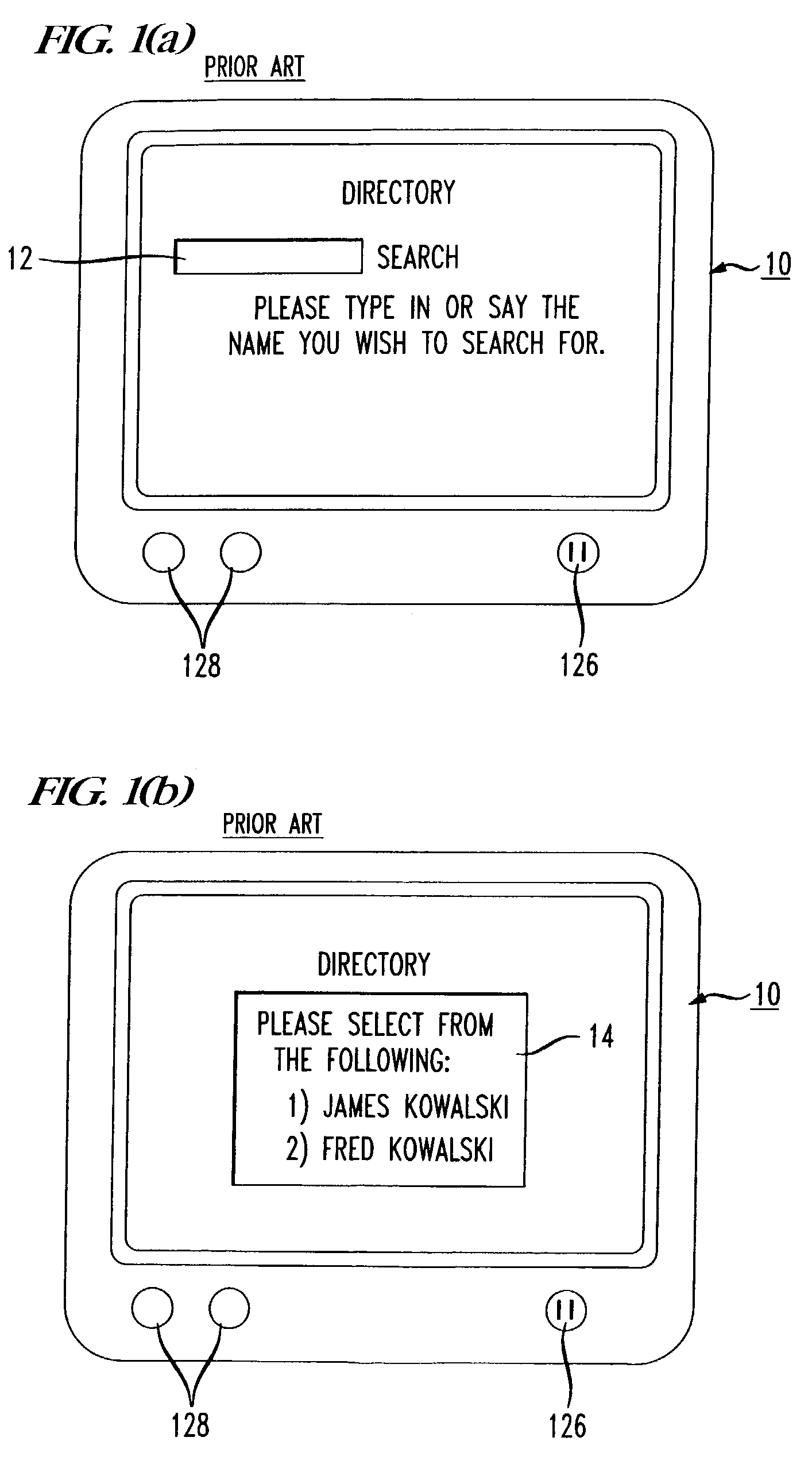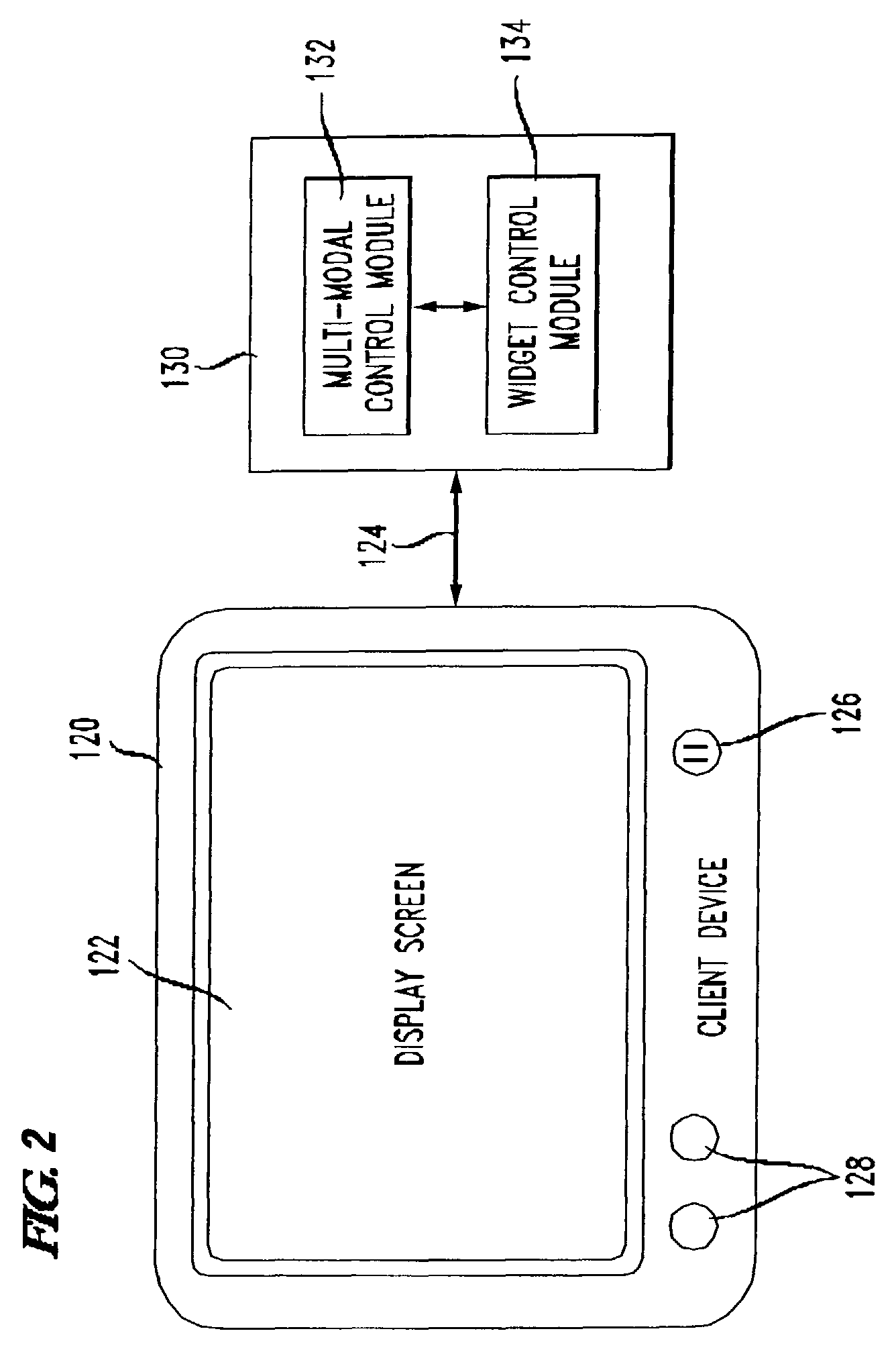Context-sensitive interface widgets for multi-modal dialog systems
a multi-modal dialog and widget technology, applied in the field of multi-modal computer interfaces, can solve the problems of user losing focus, user with too much information, time and energy waste, etc., and achieve the effect of increasing efficiency and speed of information exchange between users and the multi-modal dialog system, and not cluttered with unnecessary images
- Summary
- Abstract
- Description
- Claims
- Application Information
AI Technical Summary
Benefits of technology
Problems solved by technology
Method used
Image
Examples
first embodiment
[0026]The present invention may be understood according to the description herein and the attached figures. FIG. 2 illustrates an example system according to the present invention. In some scenarios, the present invention will operate in a client-server mode wherein a client device 120 may communicate via a wired or wireless link 124 with a server 130. The particular client device 120 is irrelevant to the present invention except that the client device must include a display screen 122 that is preferably a touch-sensitive screen as is used in Palm Pilot® devices and Fujitsu® Tablet such as the Stylistic® 500LT or 600. In the client-server mode, the computer processing and data storage for various processes according to the multi-modal interaction and presentation of widgets can be shared between the client device and the server. A “widget” preferably refers to a graphical user interface control such as a button, menu, slider, radio buttons and the like. Some widgets may also be audi...
second embodiment
[0033]the invention relates to a method of presenting widgets to a user in a multi-modal context. The invention provides an improvement in the efficiency of human-computer interaction. As an example of multi-modal interaction, assume that the client device 120 in FIG. 2 can receive speech input via the microphone 126, gesture input via the touch-sensitive screen 122, and text or other input from buttons 128.
[0034]An advantage of advanced multi-modal systems is their ability to receive input in any mode. For example, if a user desires directions from Central Park, where the user currently is, to The Metropolitan Museum in New York, the user can simple say, “please give me directions to the Metropolitan Museum” or on a touch-sensitive screen the user can gesture to mark the Metropolitan Museum and gesture “directions.” If the system does not yet know where the user currently is, the system may ask “where are you now?” and the user can say “here” and tap the screen to indicate his or h...
PUM
 Login to View More
Login to View More Abstract
Description
Claims
Application Information
 Login to View More
Login to View More - R&D
- Intellectual Property
- Life Sciences
- Materials
- Tech Scout
- Unparalleled Data Quality
- Higher Quality Content
- 60% Fewer Hallucinations
Browse by: Latest US Patents, China's latest patents, Technical Efficacy Thesaurus, Application Domain, Technology Topic, Popular Technical Reports.
© 2025 PatSnap. All rights reserved.Legal|Privacy policy|Modern Slavery Act Transparency Statement|Sitemap|About US| Contact US: help@patsnap.com



